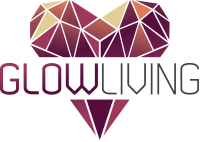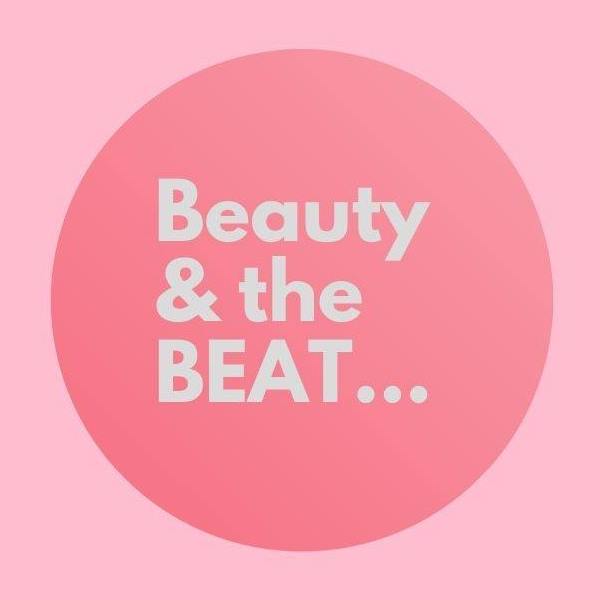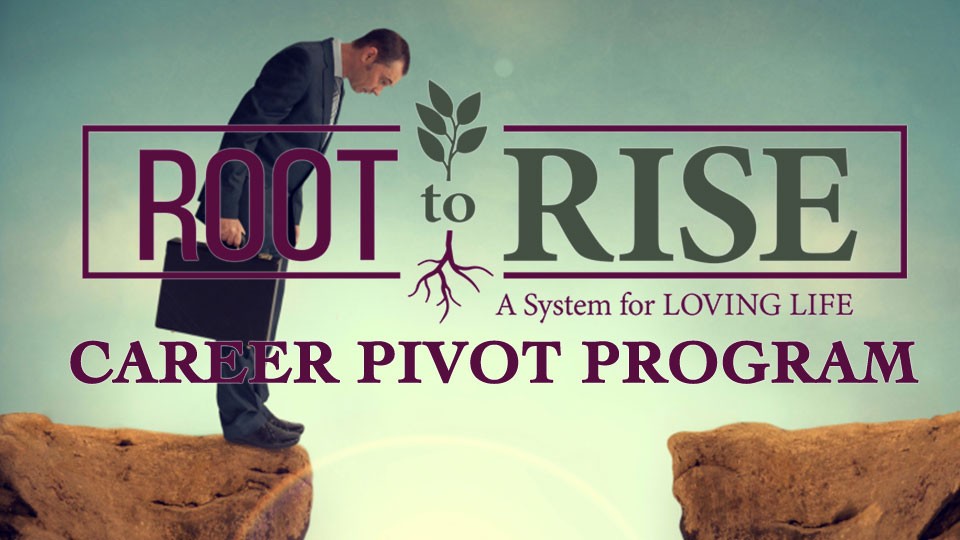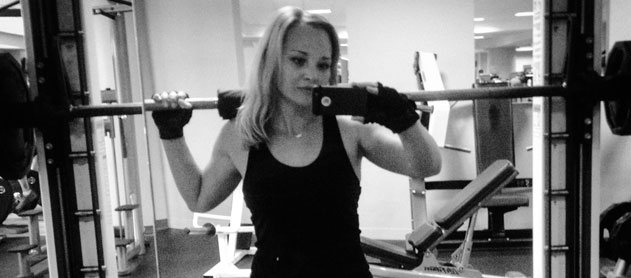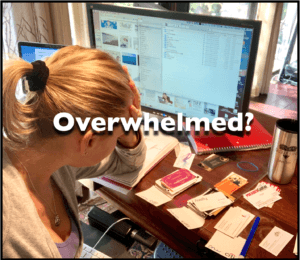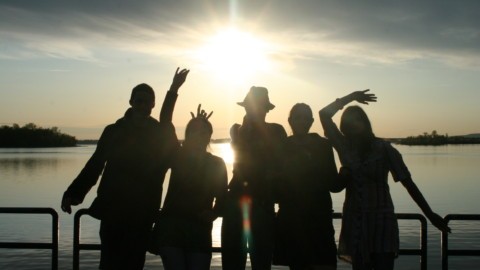Chandra Lynn talks about authenticity, personal growth, working with Tyra Banks, Root-to-Rise, coping with the pandemic, and more.
Read the full transcription of Chandra Lynn’s Interview by Amanda Van Annan on Her Beauty & The Beat Podcast
>>LISTEN TO THE FULL SHOW<<
INTRO
Amanda: Today, I’ve got Chandra Lynn with me. Now, I’m really excited to have Chandra on the show because she is a dynamic personality. She’s a woman that’s making things happen in her life, Chandra Lynn’s grandparents were psychologists which means transformation runs in her blood. As a certified life and career coach, she is on a mission to inspire people to love life as a higher purpose. She received an MBA from Golden Gate University in San Francisco. In 1999, she launched an agency called Glow Marketing and has worked with some of the biggest stars and brands in the world, including supermodel, Tyra Banks, the Black Eyed Peas, Apple Computer, Mercedes, and many more.
Working with celebrities has shown her that even the most famous people struggle to be happy and achieve their life and career goals. In response, she is committed to creating a legacy of helping people transform their lives, and overcome depression, anxiety, losses, and limitations so that they can live a life they love.
Now, Chandra is focusing on offering life and career coaching through GlowLiving.com, and her signature online course called Root-to-Rise. She is also the co-host of an online women’s circle called Own Your Throne for women’s empowerment through soul sovereignty. Chandra, welcome to Beauty and the Beat.
Chandra: Thank you so much for having me. I looking forward to this for weeks!
LIFE & CAREER COACHING
Amanda: I’ve been looking forward to having you because I’ve been reading so much about all the amazing stuff you’re doing, especially in the field of personal development and business, and I wanted to talk about that because a lot of times on the show, we talk about personal development, but I love the way you’re marrying it in with business, so the first question is, how did you get here from there? How did you decide to go on this journey, what made you not just stay in the business arena and then decide, No, I want to go into personal development and coaching and teach people how to become happy?
Chandra: That is a great question. In the beginning of the intro, you let everybody know that my grandparents were psychologists, and I was raised in a world where we talked about pretty heavy things. However, at a young age, I wasn’t really ready to help other people. I’m empathic and it made me very vulnerable, and so I went the direction of business and marketing, kind of going full steam ahead with getting an MBA in marketing and all of that, mainly because, to be honest, it offered creativity in an offered relationship building and those kind of things.
It was safer than going right to the heart of what I now look at what life is about, which is connection and growing to our full potential. But at the time, I think I was too young and going into business was a great framework, ready for me to plug into, to learn and be on a path, so it really wasn’t until I was in my 40’s that I decided I was going to embrace my own roots and offer something a lot more meaningful to me, and deeper and more transformative for other people.
I definitely feel like I got feedback throughout my entire career that I should go into psychology. I definitely offered all of my clients so much more than just marketing consulting. I offered them coaching support too because I wanted them to be the best they could be, and achieve the highest level of success. And even today, I do both, I do marketing consulting alongside life and career coaching.
3 KEY LIFE QUESTIONS
Amanda: So when we talk about marketing and life/career coaching, if a client came to you and said, I want to start a business, and this is what the business is about. Obviously, you’re helping the marketing what their product or service is, but how do you introduce the subject of themselves and becoming the representative for that business?
Chandra: Okay, another fabulous question. So here’s the thing, I think that the first question back to them is why do you want this? Because I think that there’s actually three big questions in life, and this is part of some influences that I’ve had that have taught me this (Douglas Brooks via Kristen Dessange), life comes down to these three questions: What do you want? Why do you want it? And what are you willing to do about it? So if they come to me telling me what they want, I have to go into the second question, which is why.
When I understand their why, I can pretty much tell whether it’s something that’s gonna last and whether it has the potential to be successful. If they are digging deep and they’re going into their true authenticity and source of what they’re here to do that builds their legacy and how it connects to their higher purpose, they will be driven to get through the tough times of launching a business.
If it’s superficial or just to make money or maybe a quick scheme in order to eventually get on to what they wanna do, then it could be a flash in the pan. I’ll coach them to take that next step and go a little bit deeper into their why, and it may end up informing them of a pivot that they wanna make in their careers. If I find out that their why is genuinely passion-based, heartfelt, and connecting to their authenticity, then it makes it so much easier for me to market that because I can go to the source of the real. The real reasons why they’re doing it will resonate with other people who value the same thing.
BRAND-BUILDING & AUTHENTICITY
Chandra: Everybody knows my marketing is based on authenticity, it’s based on connecting with the people that it’s meaningful to. It’s important to provide either a service or a product that is based on something that people need and solves a problem or provides a solution that’s genuinely helpful.
I’m not somebody that can even market something that’s not authentic, so what I coach people on first is that understanding, and for them to create awareness about what their why. Some people don’t know why they wanna do what they wanna do, and then when they’re coached through it, they have the clarity that allows for the message to be clear to target the right customers.
Amanda: Okay, so we’re talking about customer targeting here, but one thing I wanted to talk about was brand-building, because as you know, it’s a very difficult thing, and when someone finds out why they’re doing something, how do you go about then developing a brand, not only for their business, but for themselves, so that they become the true representative of that business.
UNDERSTANDING OUR WHY
Chandra: It really comes down to once they understand their why, then it’s the essence of what they believe. A lot of really great brands will lead with what they believe. For example, “I believe you can make a huge life transformation in a single second.” “I believe that when you connect to authenticity, you can be successful because you’re gonna be on a personal path and mission that will carry you through the hard times.”
Now, I just made two “I believe” statements that are really true to my brand, Chandra Lynn and Glow Living, and that will resonate with certain people, and those are the people that are my target market. Now, we did talk about targeting, but it’s because the messaging, belief systems, and values help us understand what that brand is even about. So it starts with the why.
It starts with the reason for what they do and what they believe, and when we can communicate what we believe, that’s the essence of a brand. Then we can communicate that in different ways…we can say it verbally, we can show it in a picture, we can have a video about it, and all of the other marketing assets. But it starts with what you believe and why.
THE PROBLEM OUR BUSINESS SOLVES
Amanda: I agree, but someone might turn round and say to you, I believe in X, Y and Z, but if I start doing that as a business, I’m not gonna make money, how do we go address this?
Chandra: Well, it really gets into what the problem is that it solves. I think that, yeah, if somebody is coming up with something that they believe and they wanna do it because they think it’s cool or they like it from their own life, but it doesn’t really serve a need of others, it doesn’t solve a problem, then that would be the second coaching point where I would call attention to that and say, “so what is it gonna do and what is your brand promise? What is it offering that goes beyond what other people are offering, and how does it solve the problem of the customer, and how is it unique and impactful?”
I would say what would help would be the second part of building the brand, the first is getting to the essence of the is and what it stands for, and the second is the brand promise. What is it going to do, what is it going to solve? And how is it different?
INTEGRATED MARKETING
Amanda: If someone came to you and said, I have an idea for X-Y-Z, I know where to get it from, a buy it from or whatever, I have an idea for a website, I have an idea for this, that… That is what you do then to help them put the whole time together?
Chandra: Yes, I refer to that as integrated marketing. It’s looking at all the different aspects of what it’s gonna take to start with a strategy that’s based on these things we’re talking about, the brand pillars and the promise, and all of this kind of thing. Then looking at how it can be rolled out in a way that people that you want to reach are gonna resonate with it.
So yes, putting together the plan based on that strategy of what they need to do to get there, so it can be all the building blocks of it, including their visual branding, website, social, videos, etc. Everything is based on the pillars of their brand, and also the Ps of marketing.
PERSONAL DEVELOPMENT IN LIFE & CAREER
Amanda: The great thing is they’re not going to just a marketing agency because they’re also getting personal development and life and career coaching. So this is what I found really, really interesting with this. Even though I’ve been an entrepreneur all my life, I’ve started several businesses, and I’ve had times when I needed someone like you, but I couldn’t find someone like that because most people are just business coaches, so they would tell you, Oh, you need to do some marketing. But they’re not really looking at the personal development side of things and marrying the two together.
Personal development plays a huge part in business, because you are the business owner, you are the entrepreneur, and you are gonna go through a lot of values and highs and lows and it can cause anxiety and depression and feeling like you can’t do it. And since we’re talking about that, I wanted to ask you about your Roots-to-Rise program.
ROOT-TO-RISE
Chandra: Roots-to-Rise is a signature program that I created. It’s based on a framework I developed that is all nature-based wisdom and universal truths. It’s approachable to everybody. It doesn’t matter what religion you’re from or what background or region of the world you live in. It is based on a very approachable methodology for helping you. Now it’s an online course, and it starts with your roots. So, you start by looking at your value systems, and how to balance these different areas of your life.
Roots are the value areas of your life and include your health and fitness, career, relationship, family, and friends. What you do in the Roots part of the program is an evaluation process to understand how well you’re meeting your needs in these different areas and how well you’re balancing them in your life.
Work balance is so important. An example of that is if you’re sick how much are you able to give to others? How much are you able to build a career? So you may be in a situation where you’re just having to focus on your own health. Or, maybe you’re doing great and everything, but you’re super-focused on work and some of your relationships are suffering. These are just two quick examples, but the program has a methodology that allows you to evaluate your root system, balance those roots for the sole purpose of building a strong foundation for your life to be able to rise from.
We start out as young people with hopes and dreams for our lives, and when we reach mid-life, if we have accomplished them all, we can feel really disappointed. It’s not that we’re incapable of reaching them, it’s just that somewhere in the root system we got stuck. We have to un-stick those roots and unblocked them so that we can even have the expectation to rise and reach goals and accomplishments.
That leads me to the second part of the course, which is called Rise. It’s about connecting in with a higher purpose and building goals and aspirations that help you build a legacy for your life. It helps you create a “bucket list life”, and start living a life that you want so that you can start feeling progress.
I believe that when we feel progress, it brings us joy, and that’s what helps create a love of life. However, if we’re stuck in the roots or we’re not clear about where we’re going and what we’re tapping into that gives us a higher mission, then we’re not feeling that full expression of joy.
Root-to-Rise helps you unblock and get unstuck from anything holding you back in your root system to build a strong and stable foundation so that you can rise to build your legacy. This can be in your career, as a person that’s raising a family, or doing whatever is important to you.
Rise is a personal growth exploration for that, and then there’s a tactical side of it once you’re clear on that. You’ll know what you’re gonna do to get there, so it goes back to that third question after you answer the What you want to do, and why you wanna be it, then what are you gonna do about it. And then it helps you put together a plan for that, that is action-oriented and more practical in nature.
COVID-19 PANDEMIC
Amanda: Really, really interesting. At the moment, everyone’s going through so many challenges in business and finance and a lot of stuff because of Covid-19. What advice would you have for people like business owners that are waiting for stimulus or government funding so that their business doesn’t close down. They don’t know what to do, what would be the best thing they could do? I mean, it might not be the only thing, but something that could help ease anxiety and help us?
Chandra: That is so important right now. What’s happening is that our need for security is what’s being threatened by this. When you’re thinking about the aspirational stuff of what you want to do, it becomes less important and takes a backseat to what you need to do to secure your finances and your family life and whatnot.
People do whatever it takes to make sure that they stay secure through these challenging times, and that can mean pausing on taking risks or trying to materialize their dreams. So what I would say is that it’s a good time to look at what it means to feel secure for you. The answer is very different for everybody.
There are some people who get that stimulus check would give them the security to march on. There are other people who need a couple of million dollars in the bank to feel secure. So there’s a broad spectrum, and it’s really good to start with knowing what security means for you. How much do you really need?
You can start by simply creating a budget and seeing what your bottom line is. What is your break-even? It’s a bit practical, but it’s focusing on what you actually need instead of fears. What happens is our irrational fears come into play and we may think we need more than we do to feel safe. When you have that reality check of what you actually need, then you can base your plan on reality and not on fear.
I think that a lot of times people can make things worse than they actually are because fear grows and takes hold during these kinds of challenging times so you need data points. Start with a break-even analysis and then consider how you were raised and what impact it’s having on your need for security.
I was brought up by depression-era grandparents, and they had what I call a “not enough syndrome”. Nothing ever seemed to be enough, and they’d always save things for a rainy day. My grandfather would wear these threadbare, white v-neck t-shirts, and everybody would give him new t-shirts thinking that’s what he needed for his gifts. But he would just take the new pack of t-shirts and put them in a drawer to save them, and continue to wear the threadbare ones.
He was raised with needing to pack away those resources for hard times. When we look at our upbringing and how that’s carried over generationally, we can start to get to the root of it. Knowing that about ourselves and creating those awarenesses around it is very important. Then you can say, “Okay, what’s reality, what do we actually need can help you address that security need.” Until that security need is fulfilled, it’s very difficult to move on to the other needs.
I’ve studied Maslow’s hierarchy of needs and an adaption to his model by Anthony Robbins and Cloe Madanes, and in my Root-to-Rise program, I’ve adapted the needs even further. So, I’m really into human needs and the healthy and unhealthy ways we get them met. When we’re stuck in that need for security, it’s very hard to think about the other things, so I would say figure out what it is that makes you feel secure from your own personal situation and try not to let fear get in the way.
TYRA BANKS
Amanda: Yeah, that’s very interesting because fears a really big thing. As humans, I believe we create fears about everything and it just leads from one thing to the other to the next, and everything just keeps on rolling in itself. Now, Chandra, you’ve worked with famous clients, celebrities, thought leaders, business leaders, a particular person I’m interested in is Tyra Banks. Will you tell the audience about that opportunity and how that happened?
Chandra: It’s a good segway because I think that when we’re presented with certain opportunities in life, we can create fears around it. We can create fears that we’re not good enough. I think that fear is something that luckily did not get in the way of that opportunity, but that I certainly had to overcome.
So a quick background is that this is actually a LinkedIn success story. I got a message from a man named Michael Salort, who I now love dearly. He reached out about my marketing and branding services and said he was impressed with it, wanted to hear more, and eventually, he told me he was working as the executive in charge of Bankable Enterprises, Tyra’s company. Now, I did not know this guy at all. I just had a LinkedIn conversation with him, and he invited me to come from California to New York to meet with Tyra on branding and website development for trya.com.
I had to do a little investigation to make sure he was legit because on my own time and with my own authority, I was going to need to get myself to New York to have this meeting, and I had no idea what was gonna be waiting for me on the other side. Bankable Enterprises was at that location address that he gave me and everything passed my safety checks, so I just went for it and I jumped on that plane.
It was pretty phenomenal that within 24 hours I was sitting at a big table with a bunch of people and in walks Tyra Banks. And I can tell you I was worried about what I was wearing. I was worried about my presentation. I was worried about being good enough and all of those kinds of things. However, there was something in me that said, “you only live once…this could be huge for your career, and you’ve gotta go for it, and if you fail, at least you tried it.”
So in the process of meeting her, I definitely had to go through that, and what was amazing was she came in wearing the same color palette that I was wearing and noticed that we were twinsies, and I proceeded to give a 51-page presentation on what I thought she should do with her brand and her website. Telling Tyra Banks what I thought she should do to take herself to the next level without really knowing her was risky in itself.
Somehow at the end of it, she liked it, and I got the job, and I worked for her for quite a while. So I managed tyra.com and I helped with brand building for her women’s empowerment project that she was doing called Beauty Inside and Out. I also helped her with her Modeland book branding and a number of other things where I was a bit of Bankable’s secret weapon. In fact, I even helped her get a trademark for her name in case she wanted to come out with a makeup line. It seemed like whatever they were throwing at me, I was rising to the challenge and making it happen.
Amanda: Such an amazing opportunity, and it’s a perfect example of how we should just go for things, right? Obviously, you did the homework, you check to make sure these people were real, not just some from Linkedin and you went for it. When you went in there, you probably had a bit of anxiety, but it didn’t show you. You just came from a true, authentic place.
Chandra: Thank you for recognizing that because that’s where it came from. I was so believing in what I was working to do, and I was ready for an opportunity to do what I do on a bigger level. I think I was energetically seeking that out, and that’s what I was attracted to ultimately.
CONNECTING ON LINKEDIN
Amanda: Yeah, and the universe brought it in and you just went for it, and that is one of the most amazing stories. And so anyone listening out there, it is possible, people do content people on LinkedIn.
Chandra: I think it is so much about being authentic on LinkedIn. First of all, it’s changed. Not to make this a LinkedIn case study, but it has changed and we’re getting a lot of sales and messages on LinkedIn now, so I would recommend that whatever you do, don’t get too seduced into using those bots and all these quick-fix solutions to reaching people on LinkedIn.
Come from your authentic place, connect with the people that you really think are gonna be valuable to you, and when you’re messaging them, let them know why it be is truthfully authentic as you can because it will show through. It definitely will look different than a lot of the sales messages they’re getting, and that can create opportunities.
Amanda: Yeah, definitely, because I get sales messages, tons of them every day, and to be honest, I didn’t even read them this morning. I had to text this one back and say, “Please stop messaging me” because her message was almost like a threat. She sent me a few messages asking about CBD or something like that. I finally wrote back and I just said, “Listen, I don’t do anything to do with CBD, leave me alone.” And that’s the problem with sales messages. They can get really annoying sometimes, especially when the subject doesn’t relate to what you do.
Chandra: Exactly. I’m sure that people are gonna come to me and say it’s so much easier to do a mass message. And I’m not saying don’t do a mass message type of thing if you need to. It’s just that for the people you really, really value the connection with, show that respect and give them the time and the energy that’s due to creating a relationship that’s built on that foundation of authenticity. Even if they’re not interested, they may see that you’re coming from a genuine place and give you the respect back to let you know where they stand.
AUTHENTICITY
Amanda: Talking about authenticity, how do you teach people to be authentic in the brand and also in themselves when they talk to their audience or when they are at a conference. How do you teach them how to be authentic?
Chandra: It’s definitely a complex thing. Some people just naturally know what they stand for, what they believe in, and they’re clear about it. Others are not. I think the root of it comes back to how they have to behave in childhood in order to show up for somebody a certain way to get approval or attention.
For example, you had to be the funny comedian for your family to be proud of you and bring you in to entertain their friends or something. You got all this positive reinforcement for being funny and so you learned to value an identity as a comedian. Or, maybe it was because you were really good at sports, or maybe because you’re so pretty.
There are a lot of different ways that we’ve had to show up to get approval or attention from people. It was somewhat subconscious when we were children, and now as adults, we have to update what it really means to be authentic and to offer our gifts, so I first start by having people look at who they have had to be in their life for different people.
Once we understand where those aspects of themselves came from, then we can explore more about who we truly are when we don’t have to feel judged by anybody. I have a free online course I offer called Connecting to Authenticity that has a worksheet that takes them through this so it’s a little bit more structured to help them with that process.
I definitely think looking back at who we’ve had to be, and those aspects of ourselves is key. We may truly be funny, we may be truly pretty, we may be great at sports, or whatever those attributes are. And that’s why I arrived at this idea that we are all multi-faceted diamonds.
We have different facets of ourselves that we put in the sun and different facets of ourselves that we keep in the shadows. To be truly authentic, we have to decide what facets of ourselves that we are gonna be able to be vulnerable enough to show and put in the sun when we’re talking to different people in our lives.
The reason I mentioned that is because there’s appropriateness that we have to think through. We’re not gonna be everything to everybody. We’re not gonna be super emotional when we’re in business and we’re not gonna be super businessy in our intimate relationship.
When we understand our different facets, then we can have more consciousness about which facets were willing to share and show to people depending on who they are for us in our lives and what appropriate to communicate about ourselves.
LETTING GO
Amanda: With authenticity also comes letting go, because sometimes people don’t want to be who they are because they’re trying to please everybody. When we are showing our authentic selves, some people just are not gonna like us and we have to be prepared to let go of that.
We need to be prepared to let those people go because when you’re authentic, you will attract your people, your tribe, that appreciate you, like what you have to offer, want to be with you on your journey, and want to make sure you succeed.
Lack of authenticity is a disservice to yourself because nobody really knows who you are, so they don’t really buy into you. They’re like, “Yeah, she’s a nice girl or he’s a nice guy.” And that’s it. Yet when your truth comes out, it allows your tribe to get attracted to you.
Chandra: I believe that 100%. We are completely in alignment with that one. I work with a lot of people who wanna make some changes in their life. They’re going through some kind of transformation. What was true to them may not be working anymore.
It could be a career path that they were on and they decided, “You know what, I don’t wanna be that anymore.” Maybe they were raised thinking that their value system was they needed to be an accountant or a doctor or a lawyer, and then after earning that degree and being in that job for a while, they may think “What I really, really, really want do is work with children” or something totally different, and so they’re going through what I call a career pivot.
RELATIONSHIPS – ROCKET SHIPS & INTIMACY LADDERS
It can happen in a relationship too. They may actually have engaged in a relationship at a young age with someone, and as they’ve grown and developed, they may not feel that that partner fits them anymore. They have to make a very difficult life decision of going through a breakup. So many of us in our path or journey to connecting to our authenticity is recognizing that we may need to shed skins at different times, and that might mean that relationships, or ways that we’re connecting with people, aren’t going be the same anymore.
I have two actually metaphors for that, one is a ROCKET SHIP. Wen we’re really clear on where we’re going and we’re on our RISE, we’re like a rocket that’s going up in space. By the nature of the rocket going into the atmosphere, pieces have to break off in order for it to fly, and sometimes things have to be let go and that can be a painful process.
It’s not easy to let go of everything that needs to be let go of in order to fly, but sometimes we’re carrying around things that are just no longer authentic to us, and no longer in alignment with our path. We have to allow them to release, to shed, to break away.
INTIMACY LADDER
Chandra: The second thing is what I call my INTIMACY LADDER which is a part of the Root-to-Rise course. This is when our relationships have to change in terms of their expectations and we need to re-position them on our ladder of intimate relationships.
We might find that we have somebody who’s been dear to us, say a bestie. We’re two single women and we’re together every day and going out of on the town. When one of us gets in a relationship, it changes the whole dynamic of the friendship and we’re the one in the relationship is not available as much anymore. This dynamic can be hurtful to the other person.
I’m just using a scenario, but what has to happen is not throwing that unavailable friend all the way off the ladder and saying “I can never be friends with them anymore.” Instead, change the expectations through kind of re-negotiating the friendship and what it’s based on. Figure out what we can and can not expect from each other. Have conscious communication to make sure that whatever expectations you have are spoken and agreed to, so that they’re not based on hidden expectations that we’re just getting disappointed about.
The authenticity that we talked about is a very complex topic because there are losses and changes that we have to make along the way as we grow on our journey and as we rise.
RELATIONSHIPS
Amanda: Yeah, and I think that was really important because you were talking about relationships, which is something we haven’t really talked about a lot. Firstly, I liked what you were talking about. When you talked about people having a friend and one person gets into a relationship and then the other one feels ignored, I feel like that comes from both sides because, especially for us as women, we’ve all had a friend who whenever she gets a relationship, she just disappears. We all know that person.
We all have one person like that in our life that just disappears, and you know, I’ve come to the stage of my life where I understand it. When she comes out of that relationship, she’ll be back trying to be a bestie. So I let her know that “Listen, I don’t mind if you disappear, but at least keep in touch. Let me know you’re okay.”
If I’m in a relationship, I still call my friend because I know they’re sensitive. We have to have an awareness of other people around us rather than being selfish. It’s also being aware of other people’s emotions. I still call my friend I’m like, “Oh, would you like to join us for dinner?” I try to make sure that they’re still integrated. Good friends become your family kind of, and you can’t ditch them to the corner every time you date a guy or a girl. We have to also respect our friendships.
Chandra: I think it’s so much about being able to talk openly to your friends about what they truly need from you while you’re in a relationship, or at any time, really. We don’t necessarily take the time, the same amount of time with our friends that we do our romantic partner to negotiate things out and talk about our needs. So when we do it can create really lifelong friendships. It’s like, “What do you need from me? Do you need me to just listen? Do you need me to give you feedback and advice> Or, do you need me to just hold you for support?”
We can make a lot of assumptions for people about what they need from us, and I think we can save ourselves a lot of guesswork by openly communicating about needs. We can get to the heart of what really makes them feel loved when we ask them what they need to feel that way. I invite everybody to think about the relationships that are important to them, and think about how long has it been since they had a conversation about needs… what their partner needs, what their friends need. They may be running themselves ragged trying to meet needs that may or may not really exist.
It may actually be less “doing” than they think it would be because sometimes people just need to know that we care about meeting their needs. Knowing that we care and we want to meet their needs know feed their soul enough.
STARTING SOMETHING NEW
Amanda: Something came to mind as you were talking about that. And it’s a question I want to ask you about starting something new. What does someone that is fully entrenched in the rat race, working 9-to-5, do to start their own business? What if they don’t even have time to sit down at a computer and put a business plan together or anything because life is that crazy for them. They’re working, they have kids, so what would you be your advice? how do they start? What would they do?
Chandra: We have to start by asking ourselves why are we busying ourselves so much. There’s a reason why you’re driving yourself like that. It may be because of the need for financial security, and they’re like, “Well, I’m just gonna do everything I can to make money right now.” So then it gets back to that earlier conversation we were having about determining how much you actually need. Then you can ask yourself what other needs do you have?
BOILING THE OCEAN
Chandra: We need to start to prioritize those needs because we just can’t do everything at once, that’s what my really great friend Cynthia Smith calls “boiling the ocean.” When I talked to her about being overwhelmed, she always said, “Stop trying to boil the ocean, get down to what is really important to you, and what need are you serving.” If you’re serving that need for security then, yeah, a lot of other things you need start to go, such as your need to have the connection to your friends, your need to have the connection to a romantic relationship, your need to feel like your health and fitness is a priority, etc.
We have all these competing needs, so I think it becomes really important to stop at least long enough to ask yourself why are you driving yourself? What need is that serving? What other needs are getting ignored that are truly important to you?
Then you can focus on finding a way to re-prioritize those needs so that you can look at serving them at higher and more healthy levels. If you are running yourself ragged and your health becomes compromised, guess what, you’re no longer gonna be available to meet those expectations. So you’ll have to prioritize your health over other needs.
Or, if you can’t spend time on your relationship because of your career, you’re not gonna be worried about your career when you’re in the middle of the divorce. So instead of going to the extremes of getting sick or going through a divorce, you can slow down long enough to look at your needs.
Evaluate how they’re getting met and come up with strategies for serving those needs at healthy levels to maintain more of a balance, but it will take somewhat of a pause to evaluate that, and that’s what the ROOTS portion of my Root-to-Rise course will help people do.
THE FIVE ROOTS & SIX HUMAN NEEDS
Amanda: So it’s really about finding what your needs are and then trying to write them down and then balance them out.
Chandra: Yes, and the reason for the course is to teach people the framework to quickly do that for themselves. Because I’ve done it so many times now, I can understand the levels that I’m meeting my needs in my different life root areas very quickly.
I can run through them and know exactly where I’m at. For example, I can realize, “Oh, I’ve been so busy, I’m feeling the need to go explore and adventure in the world and have more variety and more growth. But I can’t do that because I’m stuck at my desk on Zoom calls.”
When you focus on one need being met, other needs start to cry for attention. For example, as you build more security, you might find that you have a need for variety and uncertainty, like traveling and doing other things. We need to find balance, give and take with all these needs, and we have to constantly be assessing them.
My Root-to-Rise framework teaches you how to assess your needs quickly. I know my five roots that need to be balanced. I know exactly what levels I’m meeting all of those needs at any given time, so I can make adjustments. is It’s pretty practical, actually.
THE FIVE ROOTS
Amanda: So what are the five roots again?
Chandra:
1. health, because remember, if you don’t have your health, you don’t have anything left to give to your career or your relationships.
2. your romantic partner. If you’re not in a romantic partnership, then it’s a great time to look at self-care and self-love because it starts with our relationship with ourselves.
3. family life – parenting or focusing on siblings or our parents or other family members.
4. career. I say career over job or work because I’m looking at our career to have meaning and be more than just a job.
5. The last one is our friends, and we talked a little bit about friends and expectations and the intimacy ladder of our relationships, and how we manage our expectations around those.
THE SIX HUMAN NEEDS
So those are the five. And then within those five, we’re managing basically six needs. Every one of them is being driven by the needs that we have, and I can tell you quickly what those are:
1. Security, and when we feel secure, that’s our real foundation. So right now, especially with the pandemic and everything going on, our security need may be taking over in all of your root areas.
2. Uncertainty. There’s a lot of uncertainty and variety so sometimes when we’re feeling pretty secure, that’s when we want more variety or we might welcome a little bit more change.
3. Self. We may also have higher needs of the self now too, which is whether we feel significant in this world. We may focus on whether we feel like what we contribute is important enough.
4. Intimacy. We may also have a stronger need for intimacy, or closeness, with others because of the isolation of the quarantine. The intimacy of having those strong relationships maybe what we really need to feel loved and connected.
5. Growth. We all have the need to grow and if you aren’t growing, we are dying inside.
6. Transcendence. The final one is transcendence, which is when we’re transcending our own needs to be able to help and be of service to others.
My program actually looks at all those needs and how we’re doing that in each of our root areas, and it provides a beautiful matrix for us to quickly adjust what we’re doing to serve our needs at very high and very healthy levels throughout our life, and that’s what creates balance.
HIDDEN FORCES QUIZ
Amanda: Yeah, and I think that’s so important that I wish people could learn this in school. If you start life knowing what you need, then you don’t just start doing things randomly and then find out that you’re not happy. So I think that’s great. I mean, now, if people wanted to contact you or do one of your courses, how would they go about doing it?
Chandra: First, I want to invite people to learn what their top driving need is right now. It’s a really cool thing to learn about yourself, so I have a FREE QUIZ on GlowLiving.com. When we are conscious about our needs, the hidden forces driving us, we can make great decisions. Great decisions equal a great life!
Start by taking the 9 question quiz to learn your top driving need, and it will give you a result and a little video that I created that explains it in more detail. And then you’ll get some emails that give you videos for the other needs, so then you’ll know all six of them. This is the basis for my course.
75% OFF ROOT-TO-RISE COURSE
Then if they feel like they wanna take the Root-to-Rise course, then they can sign up through GlowLiving.com, and I’m running actually a 75% off special right now just to help people through the pandemic.
It’s really for everybody, and I feel like everybody will benefit, especially right now when we’re feeling overwhelmed, we’re needing to understand what to focus on and where to put our energy and our priorities.
GLOWLIVING.COM
Amanda: Thank you so much! And don’t forget, Chandra helps with not only personal development but also business development. So if you’ve got a project or an idea that you’ve been thinking about for years, and you’re trying to put it together including the branding, marketing, and advertising, and it’s all too much, you know the right person to call.
Go to glowliving.com where you’ll be inspired and help you hone in on what you need to be doing to make your dream possible. And so rather than sitting with anxiety at home and being anxious and thinking it’s not possible, this is the lady to call that will help you make everything.
THANK YOU!
Chandra: Thank you so much! I just have to say that a big reason why I’m still doing marketing is because of the security need. I want people to be successful so that then they can rise above that financial success and start to give their gifts out in the world to reach a level of transcendence that helps other people on this planet. That’s what my goal is.
I want people to live their best life. I want them to love their life in the process because I know it’s not always easy to do that. I’m not a Pollyanna person. I know things are hard, so I built these tools to bring life coping skills into the world as my gift that I have to leave behind is my legacy. Thank you so much, Amanda!
Amanda: So inspiring, like the whole thing about how you can marry your authenticity with your business and find what your needs are! It helps you as an entrepreneur and as a person to stay focused and less anxious and more positive, which is what we all need in these times, right?!
Chandra: Absolutely, and it’s a deep, rich topic. We could talk all day! There’s so much more. I’d love to come back any time or talk your listeners them one-on-one, I’m available and open.
Thank you so much! You know where to find Chandra… glowliving.com. You can also find her on Instagram, Facebook, Linkedin and Twitter. So follow her to get inspired. And until next time, see soon.

About Beauty and The Beat
Lifestyle, Personal Development, and Relationships
Whoever said beauty doesn’t have a heartbeat. Perspective has a lot to do with it! We dissect the beauty myth and get face to face with reality.
With an array of guests featuring experts, therapists, high-level decision-makers, and personal development coaches.
The podcast discusses life purpose through love lessons, career ups and downs, family friends, and relationships we are here to share them with you and provide practical tips and solutions.
Join Amanda and her cohosts as they pierce into the truth that most would not dare to reveal and find practical life solutions to help you create your best life.
https://www.facebook.com/BeautyATheBeat/
https://www.instagram.com/beautyatbeat/

About Amanda Van Annan
Amanda is a producer, actress, model, and entrepreneur with an MBA in Change Management and Creative Leadership. She currently spends her time jet setting between Los Angeles, Europe, and Africa due to a very demanding work schedule.
#lifecoach #business #authenticity #truth #Spiritual #SpiritualPower #focus #direction #blog #podcast #perseverance #marketing #branding #digitalcreation #focus #perseverance #honesty #togetherness #learn #listen #upbeat
